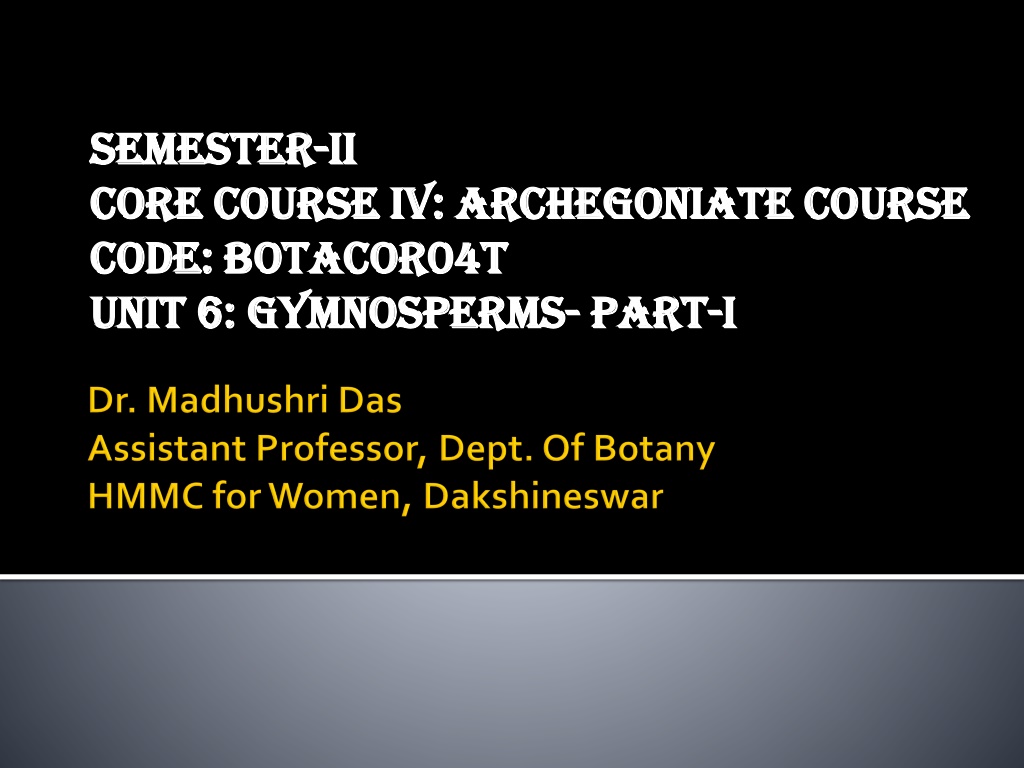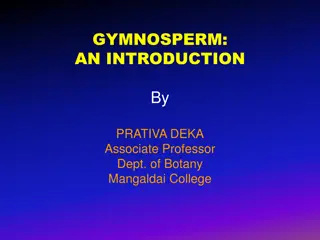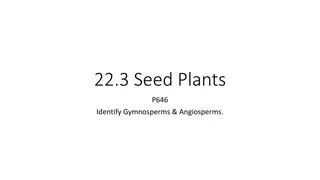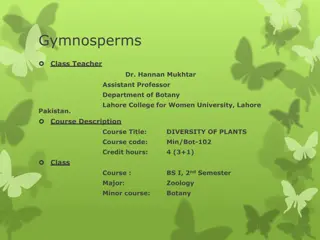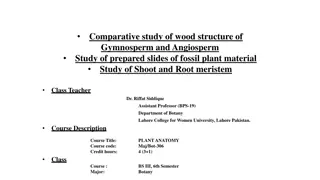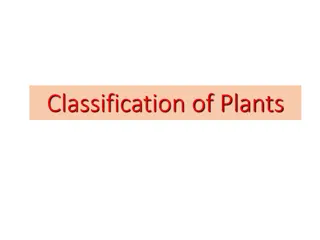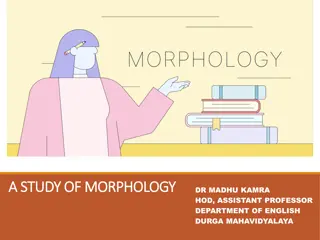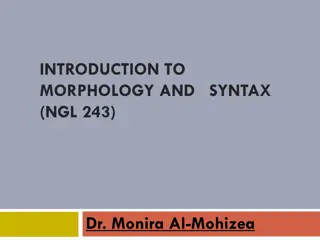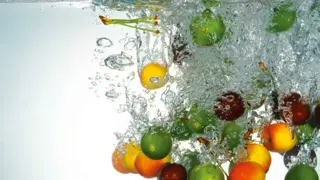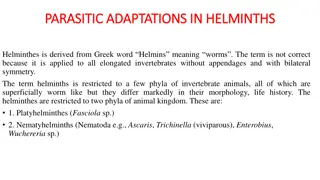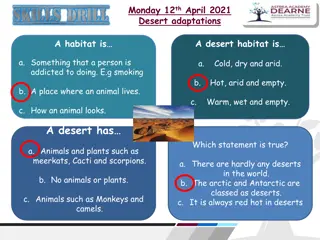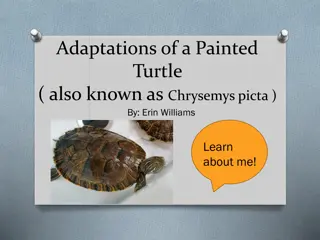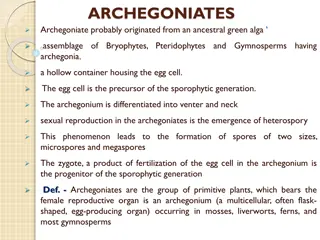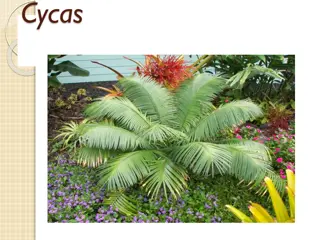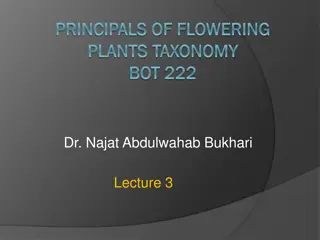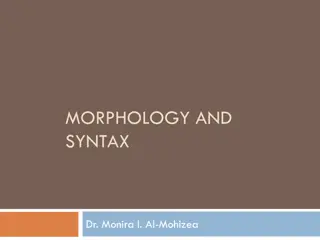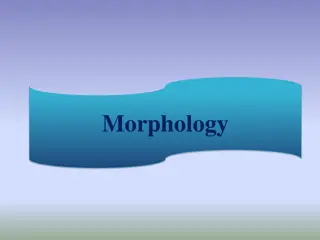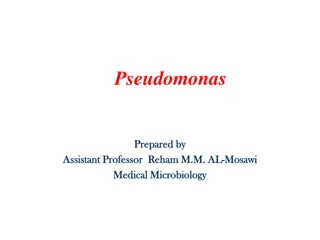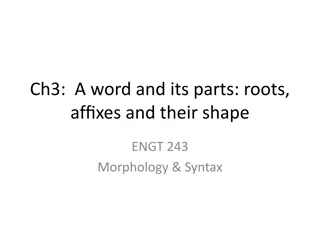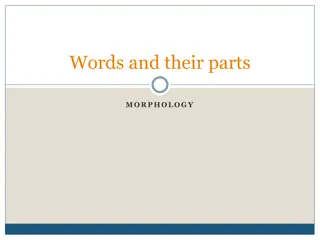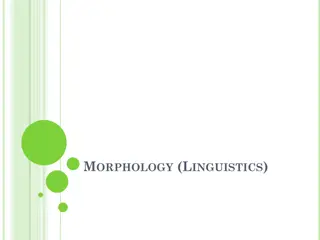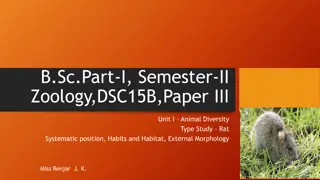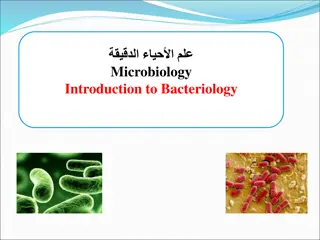Morphology and Adaptations of Gymnosperms
Explore the characteristics of gymnosperms, including their arborescent sporophyte structure, xerophytic adaptations, and symbiotic relationships with roots and fungi. Learn about the unique features such as the taproot system, vascular cylinder composition, and diverse examples like Taxodium sp. and Larix sp.
Download Presentation

Please find below an Image/Link to download the presentation.
The content on the website is provided AS IS for your information and personal use only. It may not be sold, licensed, or shared on other websites without obtaining consent from the author. Download presentation by click this link. If you encounter any issues during the download, it is possible that the publisher has removed the file from their server.
E N D
Presentation Transcript
Semester Semester- -II II Core Course IV: Archegoniate Course Core Course IV: Archegoniate Course Code: BOTACOR04T Code: BOTACOR04T Unit 6: Gymnosperms Unit 6: Gymnosperms- - Part Part- -I I
Introduction: The sporophyte is usually arborescent (resembling a tree appearance)comprising of large or small woody trees or shrubs. Few may be lianas or climbers. Most gymnosperms are evergreen but some are deciduous suchasLarix sp.and Taxodiumsp. in growth or
(A xerophyte (from Greek xeros dry, phuton plant) is a species of plant that has adaptations to survive in an environment with little liquid water, such as a desert or an ice- or snow-covered region in the Alps or the Arctic. Popular examples of xerophytes are cacti, pineapple and some Gymnosperm plants.).
Taxodium sp. Larix sp.
The plants are mostly xerophytes. The plant body is sporophyte and is differentiated into root, stem and leaves.
The plants have a long lasting tap root system. TAPROOT SYSTEM
The vascular cylinder is di-to polyarch, xylem exarch. Main elements of xylem are tracheids but in Gnetum and Ephedra vessels are also present. Phloem is composed of sieve cells and lacks companion cells.
Some forms exhibit additional symbiotic relationship roots and algae in coralloid roots (Cycas sp.) and between roots and fungi in mycorrhizic roots (Pinus sp). between
The stem is aerial, erect and branched or unbranched (Cycas sp.) with leaf scars.
In conifers two types of branches namely branches of limited growth (Dwarf shoot) and Branches of unlimited growth (Long shoot) is present.
Leaves are dimorphic, foliage and scale leaves are present. Foliage leaves are green, photosynthetic and borne on branches of limited growth. They show xerophytic features.
Secondary growth is present. The wood may be Manoxylic (Porous, soft, more parenchyma with wide medullary ray or Pycnoxylic (compact with narrow medullary ray-Pinus sp.). Cycas sp.)
They are heterosporous. The plant may be monoecious (Pinus sp.) or dioecious (Cycas sp.). Microsporangia and Megasporangia are produced on Microsporophyll and Megasporophyll respectively. Male and female cones are produced.
Anemophilous pollinated) is present. Fertilization condition in plants in which pollen tubes are developed for the transfer of the male cells to the eggs. Usually are siphonogamous, while in the lower plants the male cells usually swim to the eggs) and pollen tube helps in the transfer of male nuclei. pollination (wind- is siphonogamous (a the seed plants
Polyembryony (presence of many embryo) is Present. The naked ovule develops into seed. The endosperm is haploid and develop before fertilization.
The life cycle shows alternation of generation. The sporophytic phase is dominant and gametophytic phase is highly reduced.
Presence of well organised plant body which is differentiated into roots, stem and leaves. Presence of gymnosperms as in dicotyledons. Flowers in Gnetum resemble to the angiosperm male Zygote represent the first cell of sporophyte. cambium in flower. The
Presence of integument around the ovule. Both plant groups produce seeds. Pollen tube helps in the transfer of male nucleus in both. Presence of Eustele.
